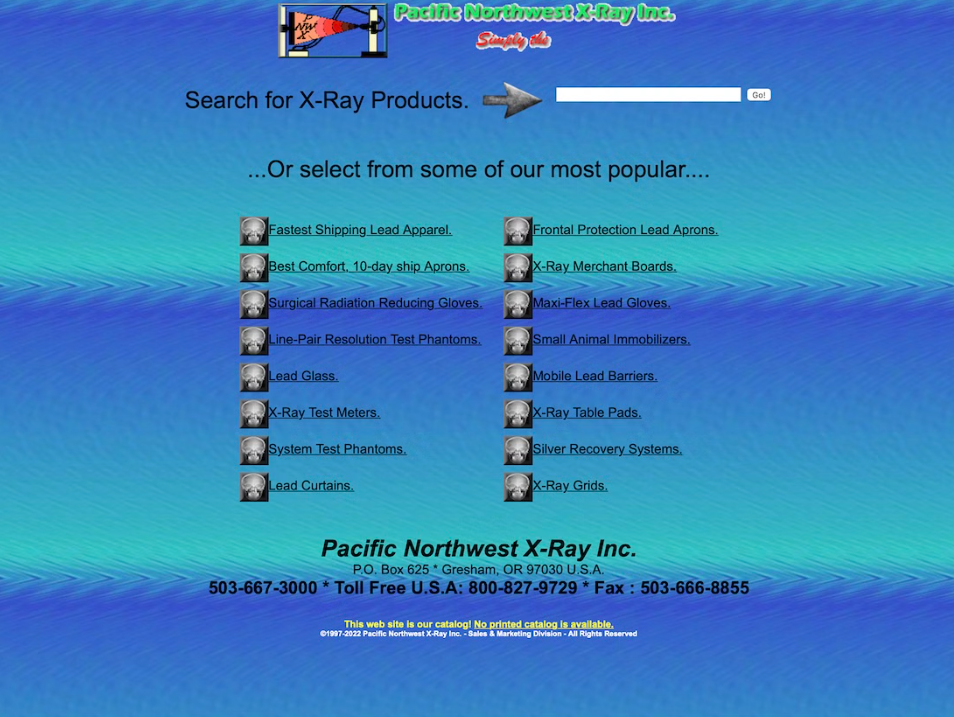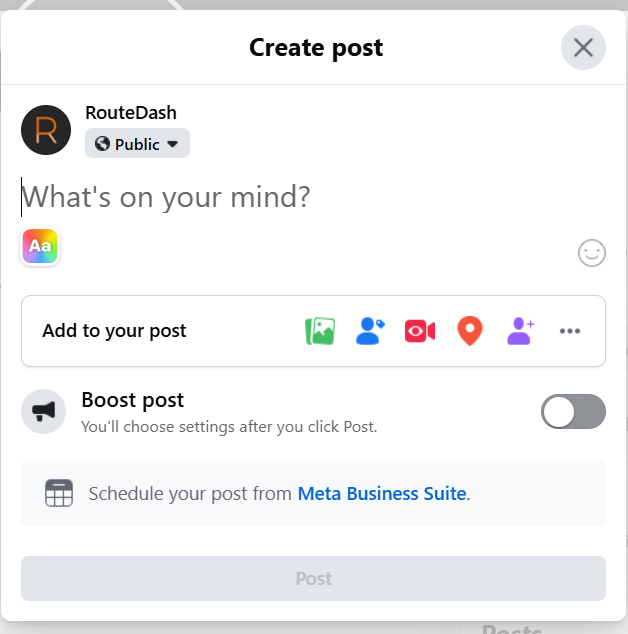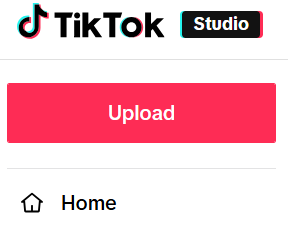Building a Website for Your Business
Boost credibility and reach with your own website!

If websites weren’t a necessity pre-pandemic, in a post-pandemic world they most definitely are. This disruption to our everyday lives has driven online traffic to new heights. This is probably not much of a surprise since we’re all living in this new reality. But how do businesses that thrived as Main Street staples or by great word of mouth succeed in this new post-pandemic reality we’re entering? By building an online presence.
This may sound lofty or a little abstract, but having that presence allows you to reach out to new and old customers, build strong relationships with them, and potentially increase sales.
There are a lot of avenues to travel down to get started, but one of the most important ones is having a great website. A website is an essential building block for your entire online presence and, fortunately, the internet has a plethora of resources out there to streamline the process of creating one.
So, you want to build a website.
Where do you start? Well, if you have an established business or service, the best place to start is buying your own domain. If you aren’t familiar, a domain is your online address (like “routedash.com”) Now you may be questioning this advice because you already know that there are places that let you have websites for free. Yes, there are tons of web hosting platforms that give you access to their services for free and let you use their domain. The trade-off here is that you’re going to be advertising their site, not only on your webpage, but it’s going to show up in searches and on all of your about info. It’s why they give it to you for free.
Get yourself a domain.
Having a custom domain gives your business credibility. It also increases your business’s visibility in search results since if someone directly searches for your business, it’s likely to be one of the first results. There are tons of places you can go to buy your domain with some being less expensive while others offer more resources and services.
Pick a domain registrar that you like and then get to work choosing a primary domain name. Remember to keep it simple and think about your customer’s perspective. It should closely reflect your business name so that if someone half remembers what your business name is when they put it in a search engine, it will still show near the top of the search results.
After that, verify that it’s available. Domain registrars typically have a search tool that allows you to check if a domain is already registered. If the domain you want is taken, you can try to buy it from whomever has it or you can alter your domain name to be something similar.
Then, if your budget allows, buy all corresponding domains. If you’re jugglingjames.com buy the .info, .biz, and others so that they don’t get bought by someone else. Typically, domains are annual subscriptions. Some registrars will offer a lower price for the first year and an increase in the second year and beyond.
Who's hosting this website party?
Now that you have your domain name it’s time to find a place to host it. These website builders range from giving you the complete freedom of building your site from scratch to offering templates that you can simply paste your content in and voila, you have a website. Find one that fits your level of comfort. There are a lot of options out there.
A good place to start is to try options with free trials where you can really get a feel for the tools and the templates they have and find one that you like using. Other things you’ll want to look out for are the types of services they offer. If you’re trying to sell online, you’ll want a host that either has an e-commerce app or will accommodate one. If you want someone to book your services, make sure they have an online booking service and calendar. Take this time to think about what you want to achieve with your website and what you want customers to do when they get there.
Fun with web design and content.
Once you’ve picked a domain and a host it’s time to get to the meat of the matter. Design and content. If you’re going with a template, choose one that looks good, is easy to use, and offers all the features you need. If you’re a bookstore you’ll probably want a template that connects with an e-commerce package and also includes things like a blog and a map so that people can find you, not a photography portfolio layout or a site loaded with sales lead forms.
This is a great time to consider the customer journey. What’s driven them to your site, what path will they take once they’re there, and what is the desired outcome from their visit? Outline it and keep it handy because you’ll need it as you figure out the design and content for your page too.
Giving your website a brand presence.
Design can go a variety of ways and includes everything from color scheme, fonts, layout, and images. You can go with the way the template is already laid out. The caution here is that since it is a template, you risk the chance that there will be a lot of websites out there that will look like yours. This can confuse visitors to your site.
An easy direction to go with design is your brand’s colors and an easy-to-read font. Don’t have those? No problem, this is a great time to figure that out. Do some research into what your competitors are doing. What is their style and what colors do they use? Do you like it, and does it fit your brand? Be inspired by what you like and avoid what you don’t.
Creating content that tells a story.
Next comes the content. To figure that out we must return to the customer journey. Your site’s content is made up of words (or copy) and pictures. Again, you can use everything that the template gives you and simply swap your name and product/service. However, you’re going to risk seeing it all over the web and, worse, it’s probably not going to be as compelling as it could be for visitors.
To achieve a compelling website, you’ll need to weave together a story through those words and pictures. Start with your homepage and tell the visitor exactly what it is you do and include images that are related. Most people don’t want to visit a site where they have to hunt to figure out if it’s even the right site. Make it easy for them to figure it out and then lead them to where you want them to go next, whether that’s more information, a link to a portfolio, or a way to sign up for a newsletter.
The images you use can be anything from stock photos to photos you’ve taken or had taken of your business. Tie them into your copy to help give readers visual cues about what you offer. Some good tips to keep in mind are that most people aren’t doing in-depth reading at first. They’re scanning looking for key words or phrases so keep the writing simple and break it up into small, easy-to-digest, paragraphs.
Make sure your website is readable, too. Read it out loud to make sure it flows well, makes sense, and has a tone that is consistent with what you want your brand to sound like. It’s not a bad idea to have other people read it too. They can offer insights that you might not have considered.
What do you do with a website?
Okay, so your website is built and published. Now what? It’s time to share the fruits of your labor! If you already have social media pages set up, make sure it’s added to their info pages. If you don’t... what are you waiting for? Set up those pages and start connecting with your customers! It’s also a good idea to make sure your website is listed on any printed materials.
Another great way to get your business noticed is by using online directories. Online directories are great free places to advertise your business and they vary from local directories to extremely niche, industry-related directories. Find all the ones that are related to your business and create your listing.
Your site and SEO optimization.
Finally, you should make sure you’ve got your site optimized for SEO. This is an important step in making sure that your site shows up in searches that aren’t for your exact business. Your website builder might have tools already built in to help you with your SEO so look for that or check out your specific builder’s help page for what they can offer you.
Measuring your site's performance.
One more thing. You should also be prepared to monitor your site’s performance. There are some great free resources to set up data analytics for your site, like Google Analytics. These sites tell you how your site is doing in searches, how many people come to your site, where they go, what they do, and how long they stay on each page. This is great information for you to tell what’s working and what isn’t on your site and make changes to improve performance. You wouldn’t want to have spent all that time only to not see any benefit from it. Periodically updating your website ensures that you continue to reach and connect with your customers.
It used to be that creating a custom website was something that only experienced coders and designers could do. This severely limited who was able to afford to have one leaving the online space only for large businesses and people who knew a guy. Thankfully, access to the internet has gotten easier paving the way for a greater variety of businesses to create an online presence. Whether your business is a restaurant or you’re an electrician, having an online presence is an important factor in building a relationship with customers. A website helps you create that presence and form relationships built on trust and confidence.
Need help building the website of your dreams? Contact us for a no-obligation consultation with our team of experts today!



